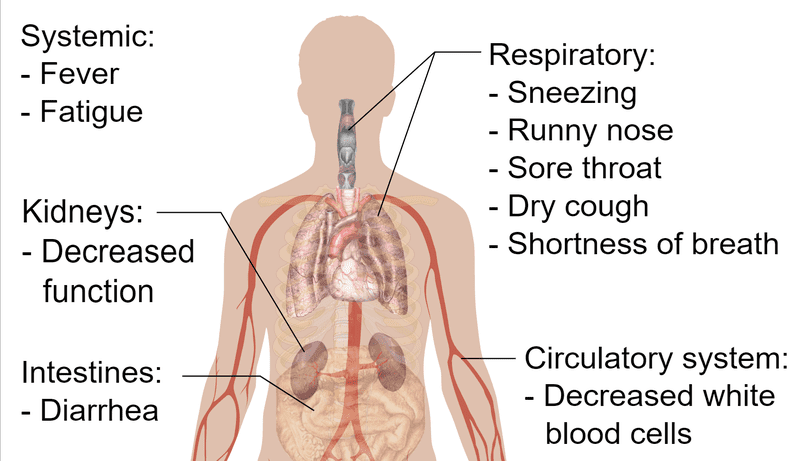The coronavirus outbreak has proven to be a major threat and an ongoing problem. While it has not yet reached the scale of influenza, it also seems to be very threatening, and it may be a long time until we see the last of it.

What’s a coronavirus / What’s the influenza
Coronaviruses are not new. We’ve known about them for a while, and researchers have studied them extensively. Coronaviruses are common among animals and in rare cases, which scientists call zoonotic, they can be transmitted from animals to humans.
There’s a good chance you’ve already had a coronavirus infection — it manifests as one of those strong, feverish colds.
Some coronaviruses, however, are much more dangerous than a cold. Take SARS (the Severe Acute Respiratory Syndrome), for instance. SARS infected around 8,000 people, killing almost 800. This whopping fatality rate of almost 10% made SARS one of the most discussed and feared epidemics of the 21st century. Thankfully, the novel coronavirus is not as dangerous as SARS, but it’s still pretty bad.
Influenza, commonly known as the flu, is caused by an influenza virus. The Orthomyxoviridae, as these viruses are often referred to, also affect a number of animals, and can jump from animals to humans.
Famous examples include the viruses H1N1 (which caused the Spanish Flu of 1918 and the more recent Swine Flu of 2009, which killed between 151,000 and 575,000 people worldwide) and H5N1, which has pandemic potential and causes avian influenza (or the bird flu)
How bad is the coronavirus compared to influenza?
This comparison is more relevant than you might think. Both are contagious, both can kill, and both seem to cause similar symptoms.

According to the CDC, as many as 646,000 people are killed by influenza each year, although the figure could also be half as low. Compared to that, the recent coronavirus outbreak’s impact seems almost negligible.
But that doesn’t tell the whole story.
Influenza kills about 2 in every 100,000 people it infects. Although it is still rather early, the coronavirus seems to be fatal much more often. Initial figures seemed to put its fatality rate at 2%, though more recently, the number seems to have dropped to 0.4%. Even so, it’s huge compared to the 0.002% fatality rate of influenza. So if the coronavirus would infect as many people as influenza, it can be much more threatening.
To make matters even worse, there is no prevention or treatment for the coronavirus (although work is heavily underway for both a treatment and a vaccine). Meanwhile, the influenza vaccine is well established.
So if the coronavirus truly goes global (and starts spreading outside of China), we could see some devastating results. Thankfully, the efforts to contain the disease have been pretty effective.
“The response to the outbreak has been fast, as has been the development of diagnostic tools. Moreover, the containment measures have been very strong compared to other outbreaks,” says senior health researcher Sandra López Vergès, a virologist at the Gorgas Memorial Research Institute for Health Studies in Panama.

The good news is that the number of coronavirus cases seems to be slowing down. It might not be long before we reach peak coronavirus, and if the containment measures have indeed been successful, then we will see the number of cases decreasing more and more.
We’re still a long way from that actually happening, however — and even if it does, it hinges on the assumption that the coronavirus will just go away. Which it might not do.
Can the coronavirus become seasonal like influenza?
The mere thought of having seasonal coronavirus outbreaks is horrifying. But it’s too early to tell how likely that is, or if it can happen at all. With an emergent virus such as 2019-nCoV (as the coronavirus virus has been named), there are two possibilities for seasonality, López Vergès explains:
- The virus is controlled in the human population, but it can remain in its zoonotic cycle and may reemerge at some point in the future (like SARS or MERS).
- Its human to human transmission becomes sufficient so it can become endemic or seasonal like influenza or the other coronaviruses inducing the common cold.
It is totally possible that the virus becomes seasonal one way or another (the second option being much more threatening), but it would depend on data that is not yet available.
“It is still early to tell,” emphasizes Inna Ricaro-Lax, a postdoctoral associate in virology and infectious Diseases at Rockefeller University. “The major reason influenza is seasonal is because the viral proteins that are recognized by our immune system are mutating quite rapidly. In other words, what our immune system learned in a previous year might not be relevant this year, and so every year a new wave of Influenza infections occur.”
The problem is that if 2019-nCoV does become seasonal, it would be much worse than a common cold. A common cold can also kill, as can influenza — but the odds of the coronavirus becoming life-threatening are far greater.

There’s also the matter of re-infection. As most people who’ve had the flu can tell you, you can get it more than once. The same thing seems to happen with other existing coronaviruses — just because you’ve had the disease once doesn’t mean you’re immunized against it.
This could end up playing an important role in the long-term evolution of the virus.
“We are not sure yet exactly how our immune system recognizes nCoV, how these viral proteins are mutating with time, and whether infection leaves lasting immunity (i.e: can a person only be infected once in their lifetime). All these will determine whether nCoV has the potential to become seasonal,” Ricaro-Lax adds.
The flu also disproportionately affects the young and elderly, which might not be the case with the coronavirus — making the latter even more menacing.
For now, at least, influenza is a far more overarching disease that infects millions of people every year and kills hundreds of thousands. But it’s the evil we know.
The coronavirus is still an ongoing threat — we don’t know how bad it will be, we don’t know if it will become seasonal, we don’t even know if we’ve managed to contain it or not. If it spreads as much as influenza, it will be devastating. We know that the coronavirus is highly infectious, but whether it is as infectious as influenza is not yet clear; even if it is, sustained efforts may have contained the virus.






